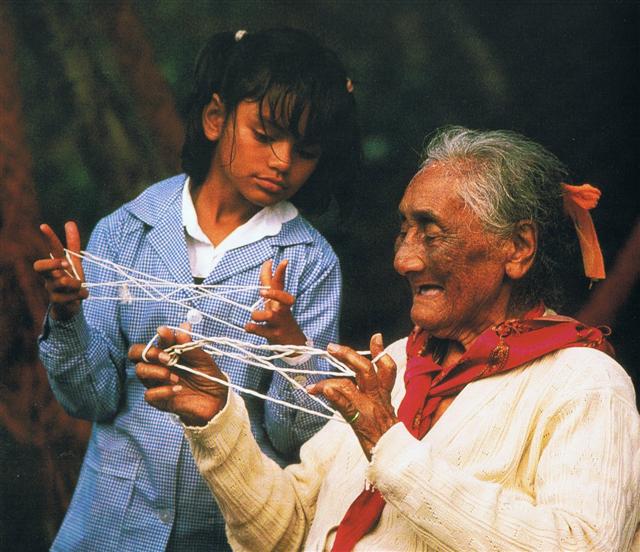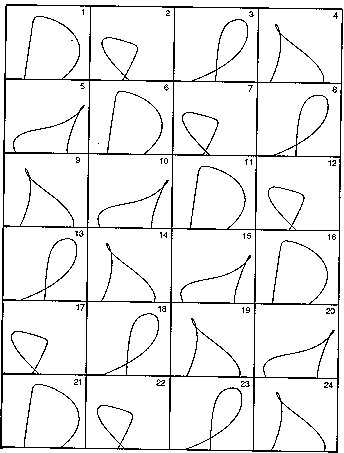A pair of hands carries 10 fingers, not 12.
... From the natives of South Island [of New Zealand] White [John] heard a quaint myth which concerns the calendar and its bearing on the sweet potato crop. Whare-patari, who is credited with introducing the year of twelve months into New Zealand, had a staff with twelve notches on it. He went on a visit to some people called Rua-roa (Long pit) who were famous round about for their extensive knowledge. They inquired of Whare how many months the year had according to his reckoning. He showed them the staff with its twelve notches, one for each month. They replied: 'We are in error since we have but ten months. Are we wrong in lifting our crop of kumara (sweet potato) in the eighth month?' Whare-patari answered: 'You are wrong. Leave them until the tenth month. Know you not that there are two odd feathers in a bird's tail? Likewise there are two odd months in the year.' The grateful tribe of Rua-roa adopted Whare's advice and found the sweet potato crop greatly improved as the result ...
4 were asleep while 3 stayed awake. Then it became midnight and Ira asked Uure if the rest of them had fallen asleep. Raparenga (the Moon), Tavake (Mars), and Ringiringi (Mercury) were fast asleep, but Makoi (Saturn) only pretended to be asleep. Uure kicked the leg of Makoi to prove also he (the youngest of them) had fallen asleep ('had crumbled into embers', hetu). Va'e: Foot, leg; te va'e mata'u, te va'e maúi, right foot, left foot. Va'e ruga, va'e raro, quick and light, without detour (lit.: foot up, foot down). Ka-oho koe ki a nua era va'e ruga va'e raro, ina ekó hipa-hipa, hurry straight to your mother, do not make any detours. Va'e pau, misshapen foot, clubfoot. Vae, to choose. Vaega, middle, centre; i vaega o, in the middle of. Vanaga. 1. Foot, paw, leg, limb; vae no roto, drawers; karikari vae, ankle. P Pau.: vaevae, foot, leg. Mgv.: vaevae, id. Mq.: vae, id. Ta.: vaevae, avae, id. 2. Pupil. 3. To choose, elect, prefer, promote, vote; vavae, to destine, to choose; vaea (vae 2), pupil. Vaeahatu (vae 1 - ahatu): moe vaeahatu, to sleep sprawling with legs extended. Vaega, center, middle, within, half; o vaega, younger; ki vaega, among, between, intermediate. P Pau.: vaega, the middle. Mgv.: vaega, center, middle. Mq.: vaena, vavena, vaveha, id. Ta.: vaehaa, half. Vaehakaroa (vae 1 - roa): moe vaehakaroa, to sleep with legs stretched out. Vaehau (vae 1 - hau 3), pantaloons, trousers. Vaeherehere (vae 1 - here 1), to attach by the paw. Vaerere (vae 1 - rere 1), to run. Churchill. Ta.: 1. Timbers of a boat. Ha.: wae, knees, side timbers of a boat. 2. To share out. Sa.: vae, to divide, to share. Ma.: wawae, to divide. Churchill. ... Uure replied, 'He is having a bad [pangahaa] dream. He is lying there completely asleep; he and the other five (? koia korima) are snoring loudly.' ... he ki mai a Uure.ku hetu ana ku pangahaa ana.ku tani ana tē ngorongoro.koia korima.i ngatu ro ai ki te vae.o Makoi.e Uure ... (hetu 1. To make sound; figuratively: famous, renowned. 2. To crumble into embers ...) 5 (asleep) + 2 (awake) = 7. Yet Uure counted 2 (awake) + 6 (asleep) = 8. In a way it proves Uure was Venus. ... After five complete cycles totaling 2,920 days, the movement of Venus will fill eight idealized years of 365 days each and come within hours of spanning 99 lunations ...
... In Babylonian religion, Sarpanit (alternatively Sarpanitu, Zarpanit, Zarpandit, Zerpanitum, Zerbanitu, or Zirbanit) is a mother goddess and the consort of the chief god, Marduk. Her name means 'the shining one', and she is sometimes associated with the planet Venus. By a play on words her name was interpreted as zēr-bānītu, or 'creatress of seed', and is thereby associated with the goddess Aruru, who, according to Babylonian myth, created mankind. Her marriage with Marduk was celebrated annually at New Year in Babylon. She was worshipped via the rising moon, and was ofted depicted as being pregnant. She is also known as Erua. She may be the same as Gamsu, Ishtar, and / or Bēlit ...
... pay close attention [hakarongo rivariva, listen attentively] to what is being said. Act as if you were asleep when I ask the esteemed one (honui, i.e., Ira) ... ki te ki ana ui au.ki tou honui.he mea koe ē hauru hia ... ... Mons Maenalus, at the feet of Boötes, was formed by Hevelius, and published in his Firmamentum Sobiescianum; this title coinciding with those of neighboring stellar groups bearing Arcadian names. It is sometimes, although incorrectly, given as Mons Menelaus, - perhaps, as Smyth suggested, after the Alexandrian astronomer referred to by Ptolemy and Plutarch. The Germans know it as the Berg Menalus; and the Italians as Menalo. Landseer has a striking representation of the Husbandsman, as he styles Boötes, with sickle and staff, standing on this constellation figure. A possible explanation of its origin may be found in what Hewitt writes in his Essays on the Ruling Races of Prehistoric Times: The Sun-god thence climbed up the mother-mountain of the Kushika race as the constellation Hercules, who is depicted in the old traditional pictorial astronomy as climbing painfully up the hill to reach the constellation of the Tortoise, now called Lyra, and thus attain the polar star Vega, which was the polar star from 10000 to 8000 B.C. May not this modern companion constellation, Mons Maenalus, be from a recollection of this early Hindu conception of our Hercules transferred to the adjacent Bootes?
... Shen Kua was born in +1030 and had the usual career of a scholar in government service; he was at various times ambassador to the Hsi-Hsia and other countries, military commander, director of hydraulic works, and chancellor of the Han-Lin Academy. But wherever he went on his numerous travels, and however much occupied with his official duties, he never failed to note down all that was of scientific or technical interest. His Mêng Chhi Pi Than, the date of which is about +1086, is one of the first books to describe the magnetic compass ... but it also contains much astronomy and mathematics, together with notices of fossils, the making of relief maps and other matters of cartographic interest, descriptions of metallurgical processes, and a high proportion of biological observations. The scientific parts form rather more than half the book. It is really surprising that no translation of the Mêng Chhi Pi Than into any Western language has ever been undertaken. In view of its importance as a landmark in the history of science in China I shall pause here to give a tabular analysis of the material contained in it ... The book has twenty-six chapters, with an additional four appendices, and each of these is divided up into from fifteen to thirty paragraphs or entries. The distribution of these paragraphs is roughly as follows:
... These synodic orbits show 24 consecutive appearances of Venus:
|
|||||||||||||||||||||||||||||||||||||||||||||||||||||||||||||||||||||||||||||||||||||||||||||||||||||||||||||||||||||||||||||||||||||||||||||||||||||||||||||||||||||||||||||||||||||||||||||||||










